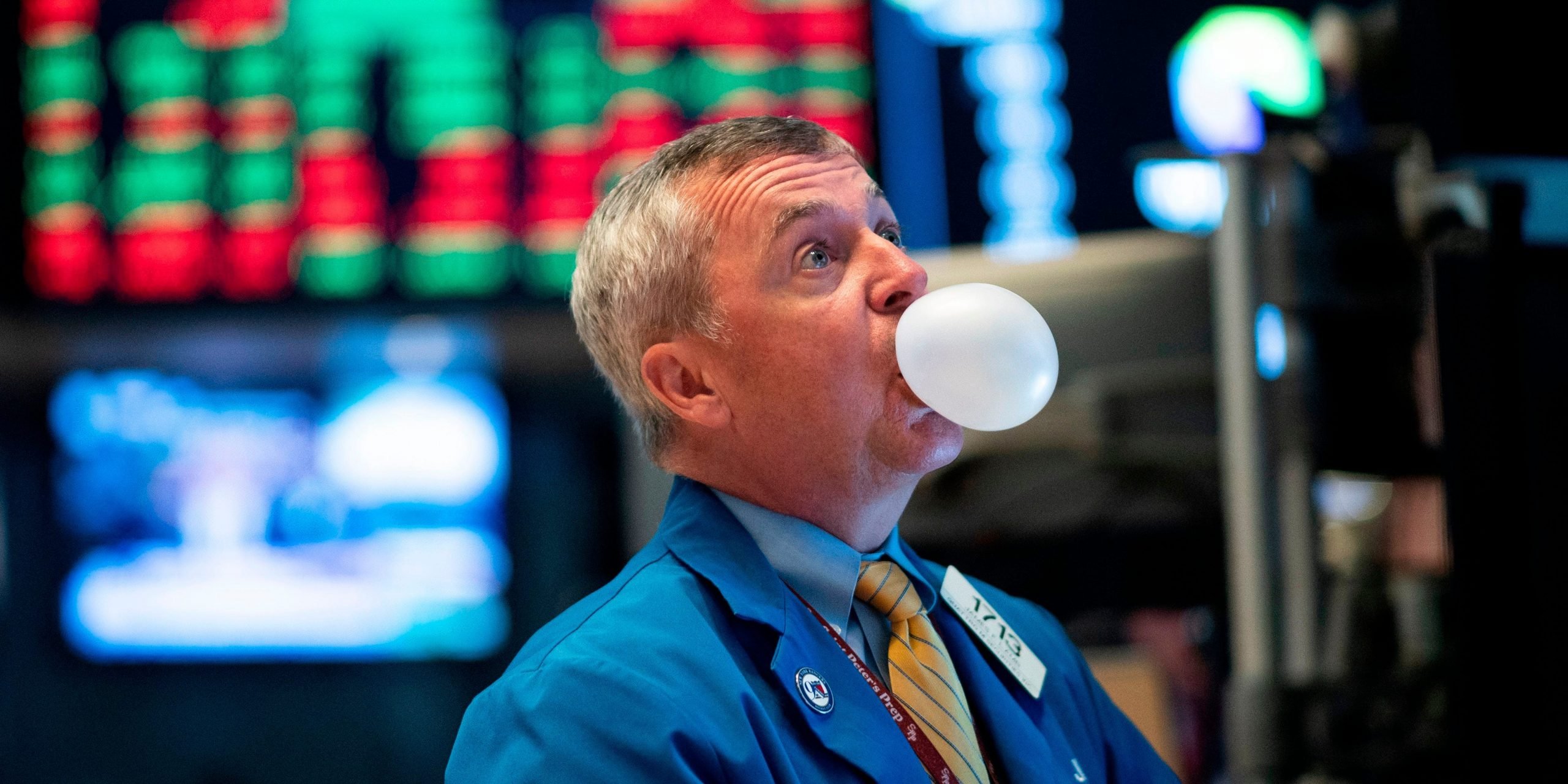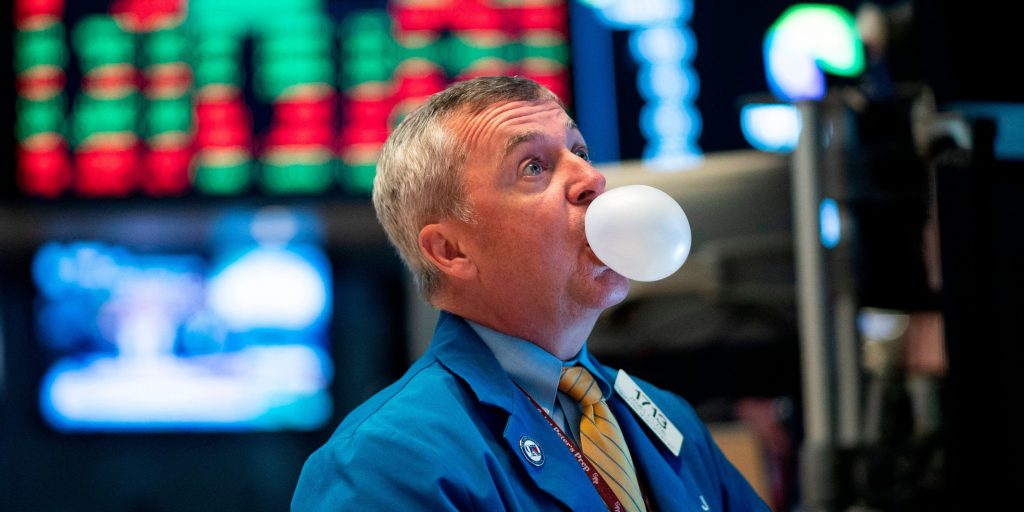
- A potential peak in margin debt could be setting the stage for a bearish stock market, according to BofA.
- FINRA margin debt dropped 4% to $844 billion in July, even as stocks rallied 2.3%.
- "Although peaks in margin debt don't always coincide with highs for the S&P 500, they tend to be bearish for equities," BofA said.
- Sign up here for our daily newsletter, 10 Things Before the Opening Bell.
A potential peak in investor leverage could be setting the stage for a bearish stock market going forward, Bank of America said in a note on Tuesday.
Investors have been de-risking their portfolios recently, as FINRA margin debt fell 4% from a record $882 billion in June to $844 billion in July. Meanwhile, stocks rose 2.3% to record highs in July.
"Rising leverage tends to confirm US equity rallies. It is not new record highs for margin debt that we worry about. We get concerned when margin debt stops rising to suggest that investors have begun to reduce leverage," BofA's technical research strategist Stephen Suttmeier said.
Using various data sources, BofA found that since 1928, a peak in margin debt led to the S&P 500 generating a negative one-year return 71% of the time, with an average return of -7.8%, and a median return of -10.7%.
"Although peaks in margin debt don't always coincide with highs for the S&P 500, they tend to be bearish for equities," Suttmeier said.
But the worrying technical signal of a peak in margin debt could be negated if FINRA margin debt quickly recovers and exceeds June's record level. The S&P 500 is up about 2% in August, and up nearly 5% since the end of June.
"If June 2021 proves to be a cycle peak for margin debt, it would coincide with the beginning of the weakest part of the presidential cycle. This could provide a healthy pause within a larger secular bull market, especially after the fastest rally in the S&P 500 to 100% since the 1930s," Suttmeier concluded.
